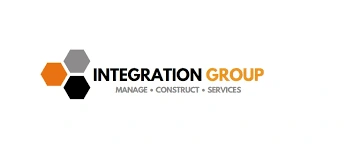What Builders, Engineers & Clients Will Expect in 2026: Our Predictions for the Future of BIM & Digital Delivery
As the construction industry pushes toward faster, smarter and more predictable project delivery, 2026 is shaping up to be a defining year for digital construction. BIM is no longer a “value-add”—it’s becoming the foundation of how projects are planned, coordinated and executed across Australia.
At Draftech, we’re seeing clear shifts in what builders, engineers and clients expect from digital deliverables. Here are the major trends shaping the year ahead—and how we’re preparing to support our partners through every stage.
- Early Prefabrication Integration Will Become Standard Practice
Prefabrication is moving from an efficiency strategy to a core delivery requirement. Builders want certainty, suppliers want repeatability, and engineers want fewer late-stage design changes. The only way to achieve this is to integrate BIM, service design, and prefabrication workflows much earlier in the project lifecycle.
In 2026, we expect:
- MEP trades engaging earlier with coordination partners
- Increased use of modular kits, plant skids, risers and prefabricated service racks
- Builders requesting “prefab-ready” BIM models to speed up manufacturing and reduce site risk
How Draftech is preparing:
We’ve strengthened our workflows to support early-stage coordination, and our team is working more closely than ever with fabricators and suppliers to ensure models are not just coordinated—but constructible.
- Higher Model Accuracy Standards (LOD 350–500 Will Be the New Normal)
Gone are the days of loose, schematic models. Contractors and clients now expect highly accurate, installation-ready models.
In 2026, LOD 350–500 deliverables will become standard for:
- MEP services
- Architectural fit out
- Structural penetrations
- Installation sequencing
- As-built verification and digital handover
These expectations will place pressure on project teams to ensure models are coordinated the first time—minimizing clashes, reducing RFIs and giving builders confidence during procurement and installation.
How Draftech is preparing:
We have invested in advanced QA processes, multi-platform clash detection workflows, and highly skilled modellers who specialise in service accuracy and constructability.
- Clients Will Demand Asset Data and Digital Twins, Not Just Drawings
Owners are now looking beyond construction. They want long-term value.
In 2026, clients will increasingly request:
- Structured asset data
- COBie or custom data deliverables
- Connected models for operations and maintenance
- Digital twins for real-time monitoring and facility management
This shift means that the BIM model must become a data-rich digital asset, not just a visual one.
How Draftech is preparing:
We’re enhancing our data management capabilities, improving metadata consistency across models and partnering with clients to understand their asset handover requirements from day one.
- Coordination Between Disciplines Will Be Tighter Than Ever
As buildings become more complex—especially in sectors like hospitals, data centres, universities and defence—tight coordination between disciplines is no longer optional.
In 2026, we’ll see:
- More integrated design workshops
- Earlier conflict resolution
- Less tolerance for “design by RFI”
- Shared models are becoming the main source of truth
- Greater accountability for coordination accuracy
This will put greater importance on the quality and consistency of coordination models.
How Draftech is preparing:
Our teams are working within unified coordination environments, ensuring every discipline—mechanical, electrical, hydraulic, fire and structural—has clear alignment throughout the project. We manage clashes, track changes and maintain audit trails to ensure project transparency.
- Faster Delivery Cycles Will Drive Greater Reliance on Specialist BIM Teams
As timeframes tighten, builders and engineers will look for specialist modelling partners to deliver high-quality BIM outputs quickly, accurately and consistently.
Expectations will include:
- Faster modelling turnarounds
- More accurate shop drawings
- Rapid coordination cycles
- Immediate clash resolution
- Scalable resourcing for peak project phases
Projects that rely solely on internal resources will struggle to keep pace.
How Draftech is preparing:
We’ve expanded our team, invested in advanced BIM technologies, and implemented scalable delivery systems to support fast-moving projects without sacrificing accuracy.
The industry is shifting rapidly, and those who embrace early integration, better data and higher standards will lead the market. Builders, engineers and clients are seeking partners who understand these expectations and can deliver digital certainty from concept to construction.
Draftech is Ready for the Future
With our 25th anniversary approaching in May 2026 and a proven record across some of Australia’s most complex projects, Draftech is fully ready for the next wave of digital construction.
In 2026, our focus remains on:
- Delivering highly accurate, constructible BIM models
- Supporting early prefabrication and manufacturing workflows
- Enhancing data-rich digital deliverables
- Strengthening cross-discipline coordination
- Providing reliable, scalable BIM support for any project size
As the industry evolves, we’re committed to helping project teams build smarter, faster and with more confidence.
Draftech – Your Project, Our Expertise
































